452 Search Results for visual supports
October 12, 2013
by Robin Parker -
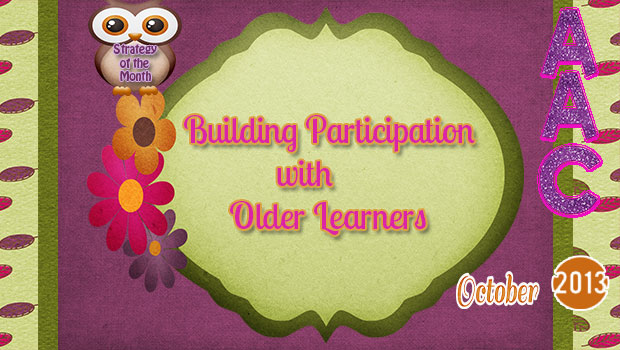
We love active participation for communication and language learning. Actually, we love active participation in all areas of life for us, for our students, for everyone. When Carole introduced the Building Participation Strategy of the Month, she discussed the role of the Participation Model (Beukelman & Mirenda, 1988; 2013). The Participation Model is a framework for understanding the barriers to participation and then from a prAACtical intervention standpoint developing strategies and activities to increase active participation in a variety of (ALL) aspects of life. For the 2012 AAC Awareness Month, we discussed barriers to participation. This year’s focus is on activities and strategies for getting past the barriers to building age appropriate authentic active participation for ALL learners. We have learned that when older learners with significant communication challenges are provided with age appropriate activities and supports, they can be engaged and motivated to participate and can often surprise us with... [Read More...]
August 31, 2013
by Robin Parker -
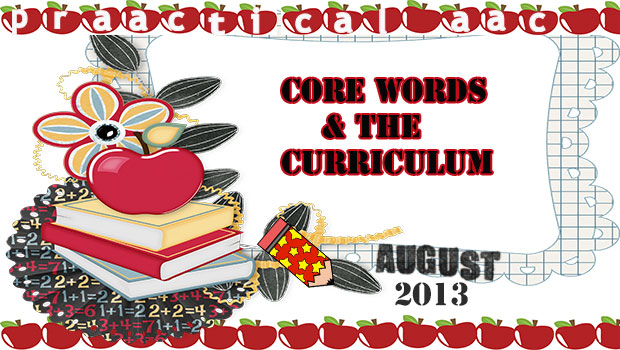
Core words can easily be incorporated into academic curriculum. There just needs to be systematic planning for core word vocabulary and then of course the joining of fringe words. One of the best visual explanations of core words is in the now ‘famous’ you tube video Language Stealers (HD). If you have not seen it, it is worth watching for many reasons but in the context of this post, it perfectly illustrates how you can teach about Greek and Roman history with core words. Planning for Core Words for the Classroom (& ALL School Activities) Have the core word communication board with you at ALL times– If you (SLP/Educator) have your core word communication board, you can model and teach the target core words during all lessons. A premise of this approach is that the student has access to their core word vocabulary display on a no-tech communication board or on their... [Read More...]
July 20, 2013
by Robin Parker -
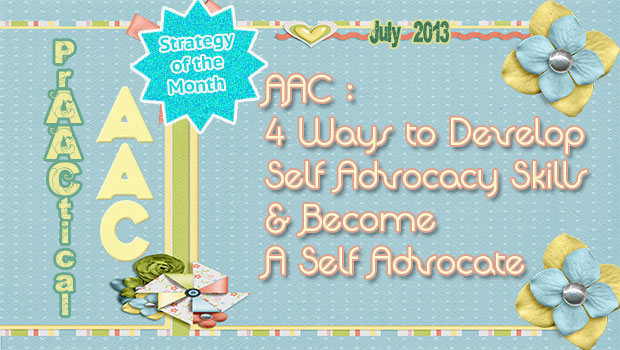
Self Advocacy comes in many shapes and forms for all learners. We all need to have a level of self advocacy skills to have a positive self-esteem, to continue a path of life long learning, and to defend and protect ourselves in situations that potentially can be harmful. The teaching of self advocacy begins with learning to request and protest but goes way beyond that for ALL learners. For those with AAC needs, specific strategies and direct instruction are often necessary to make self advocacy a comprehensive and robust skill. Self advocacy skills are a priority for older learners so for our Strategy of the Month, we will discuss some ways to help develop self advocacy skills beyond the requesting and protesting levels. We hope to build strong self advocacy skills for ALL learners. Rating Scales– Teach the use of rating scales to help AAC learners give their opinions on... [Read More...]
June 29, 2013
by Carole Zangari -
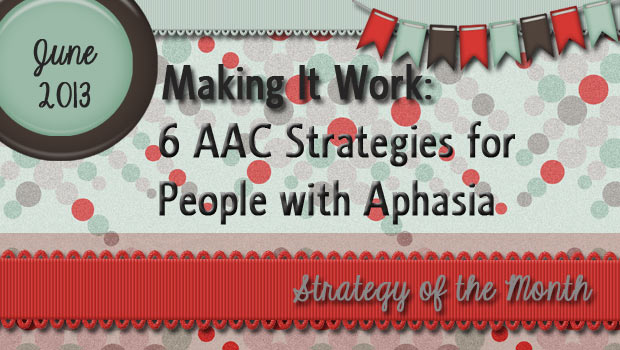
People with aphasia are often most successful when a number of different strategies are combined. In this post, we discuss a number of strategies that we can use in our therapy and teach to communication partners. Augmented Input We’ve written so many posts about aided language input that we’re almost embarrassed to bring it up again. Almost. It seems like no matter which age group or clinical population is the subject of our post, that strategy plays a central role. It is the same for people with aphasia with one exception. They benefit from a broader array of input cues, such as gestures, writing, and even pantomime. Augmented input is the term that is used to refer to oral language that is supplemented with pictures, print, gestures, pantomime, and the use of objects in the environment. By using these things as you speak, you enhance the ability of the person... [Read More...]
June 1, 2013
by Carole Zangari -
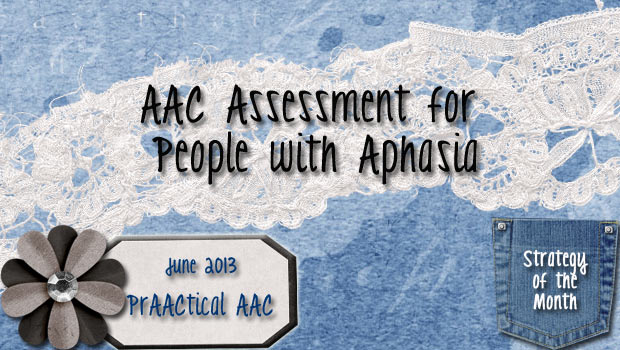
Many people with aphasia fail to regain sufficient speech and language skills to meet their communication needs. With more than one million people with aphasia in the US alone, chances are most people reading this know at least one person affected by the disorder. While many go on to regain functional speech and language skills, some remain unable to communicate well enough catch up with a neighbor, talk about bills with a spouse, ask a question in a store, play with a grandchild, or tell their healthcare providers about side effects or symptoms. It’s hard to really imagine how devastating and isolating this experience may be. Aphasia Awareness Month seemed like the perfect time to reach out to SLPs with information on AAC for people with aphasia. In this post, we’ll share some thoughts and resources on assessment. Assessment activities are, of course, driven by the purpose for which the... [Read More...]
May 9, 2013
by Carole Zangari -
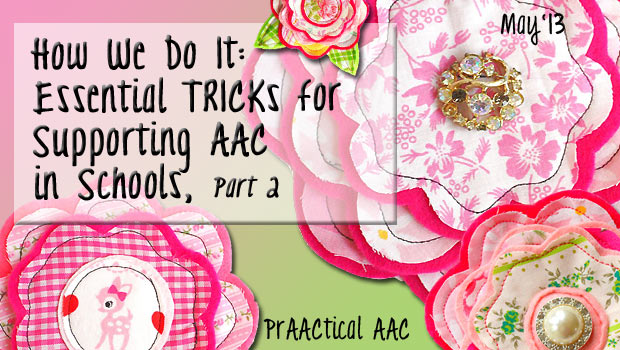
Today we welcome back 3 SLPs from the Orange County Public School (OCPS) AT team, Cathy George, Marcia Sterner, and Marcia Piersall. They are part of a very active and competent AT Team that supports over 700 students with dedicated AAC devices. It is no surprise that they’ve come up with a list of 5 essential TRICKs that they count on to help them support these students and their educational teams. You can read about the first 2 TRICKS, Try It and Resources, here and download some of their terrific resources. Today, we learn about the rest of their TRICKs: Information, Can’t Live Without It, and Kick It Up A Notch. Give Me Five: Essential TRICKS, Part 2 INFORMATION about the student Student interests What systems previously tried What tasks s/he is struggling with Trial data sheet– Communicative competence organizer CAN’T LIVE WITHOUT IT: In addition to AAC devices, these... [Read More...]
April 13, 2013
by Robin Parker -
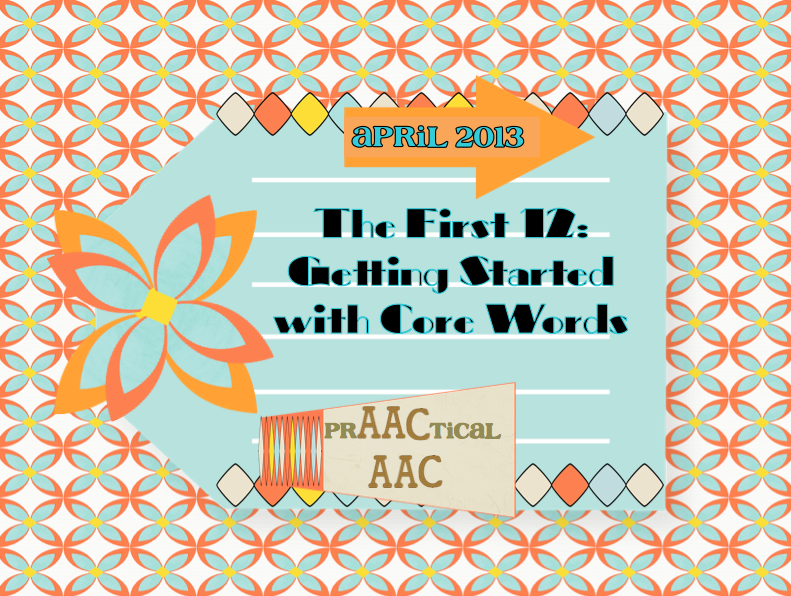
The focus this month is on core word vocabulary and effective teaching strategies. Most core vocabulary is represented through abstract symbols that range from translucent (i.e., makes sense after it is explained) to opaque (i.e., doesn’t have any resemblance to the word or concept) which makes the need for effective teaching all the more important. It also makes it more fun because meaningful language experiences, emotional language experiences, and repetition with variety experiences are going to be the platform for teaching. Within the platform of authentic language experiences, layers of teaching strategies can be applied. The more strategies we apply to learning, the more we assure ALL learners will benefit from our teaching. Core word vocabulary teaching begins with a few premises that underlie the process. These are not new ideas but ones that should be reaffirmed as you begin teaching. It is important, as always, to presume competence. All learners... [Read More...]
April 9, 2013
by Robin Parker -
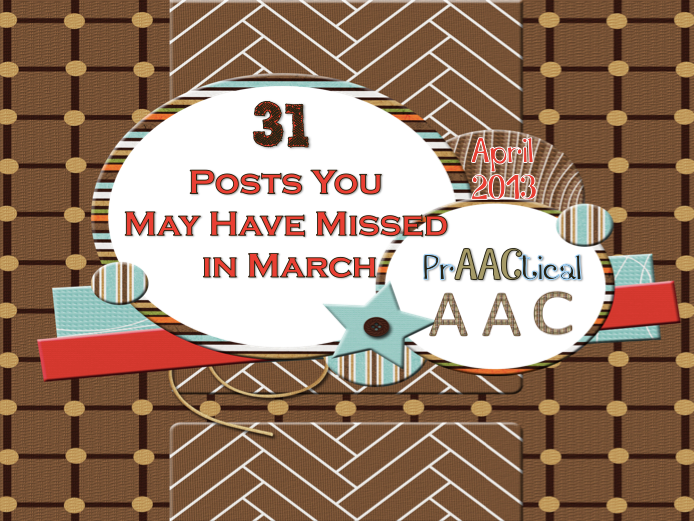
Strategy of The Month Narrative Skills for People with AAC Needs PrAACtical AAC & Personal Narratives Narrative Assessment & People Who Use AAC Let Me Tell You Something: Narratives for the Beginning Communicator Helping People with AAC Needs Develop Personal Narratives PrAACtical Thinking PrAACtical Guessing: 5 APPs for Interactive Inferencing Another Look at Vocabulary Instruction in AAC Magic Moments in Building Vocabulary with ‘Its Cool to be Clever’ It’s PrAACtically Saint Patrick’s Day 28 Posts You May Have Missed in February 10 AAC Things To Do for PrAACtically Free in 10 Minutes of Less Daylight Savings Time & PrAACtical Behavior Another Look At Language Facilitation Strategies to Make AAC Learning Effective Literacy, AT, & Students with Significant Disabilities Watch This: Planning with Strategies Worth Repeating: Big Ideas in Teaching AAC Vocabulary PrAACtical Passover & Easter Supports 30 Things to do During Autism Awareness Month A Beautiful Family, But 1 Question... [Read More...]
March 28, 2013
by Carole Zangari -
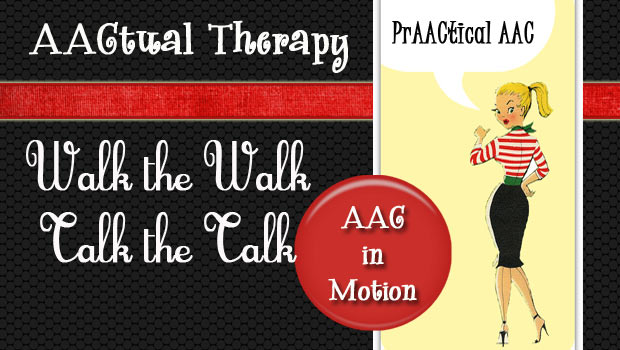
Tanna Neufeld hits another homerun with this post about co-treating children with multiple disabilities. Collaborating with our colleagues is both fun and challenging. Let’s take a look at the prAACtical ways that Tanna and her colleagues support kids with motor and visual impairments who are learning to use AAC. Fridays are my favorite. And not just for the obvious reasons (TGIF), but also because Fridays are one of the most challenging and exciting days of my work week. Every Friday, I am lucky enough to team with my favorite PTs for joint treatment sessions to support several children with multiple motor and communication challenges. Around our center, we lovingly refer to these kids as our “motor kids”. All of these little ones are nonverbal, and all have very complex motor challenges that significantly limit their ability to interact with traditional play and learning environments. Many of these kids also... [Read More...]
March 21, 2013
by Carole Zangari -
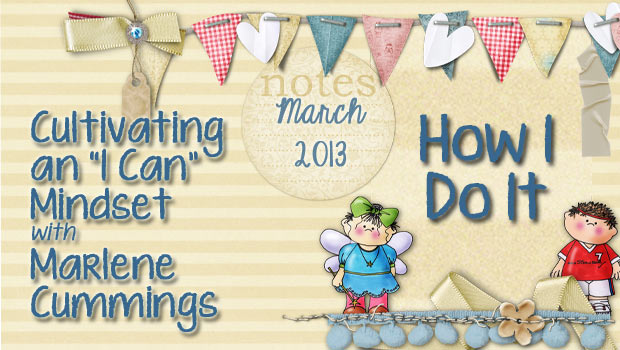
As much as we love fresh new voices in the AAC community, there is simply nothing like the voice of experience. When a program has had more than 40 years of experience providing AAC services, we listen! Today, we are honored to have Marlene Cummings, an AAC SLP from Michigan, share the collective wisdom of her team. I have found that one of the joys in my professional life is asking hard questions about my present work and then figuring out ways to address those questions. Much of my 30 + years have been spent designing and implementing programs, systems and materials to support young children with complex communication needs in the role of the teacher in these classrooms. I explored ways to design environments and develop curricular frameworks and instructional materials, which would provide students with the instruction and opportunities to become competent communicators, all from the view of... [Read More...]









